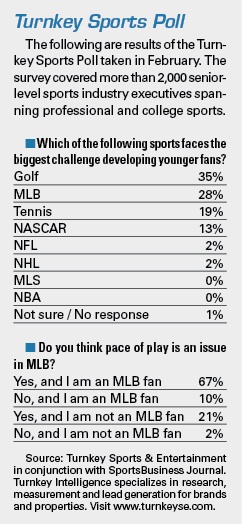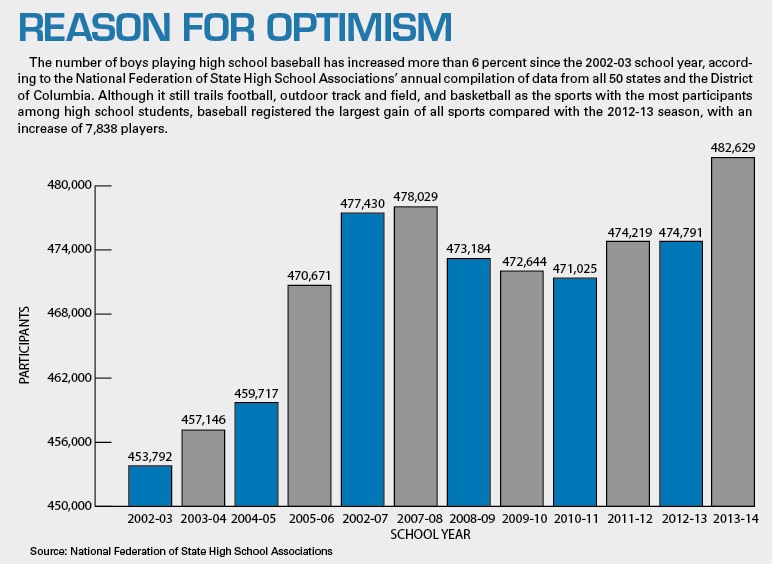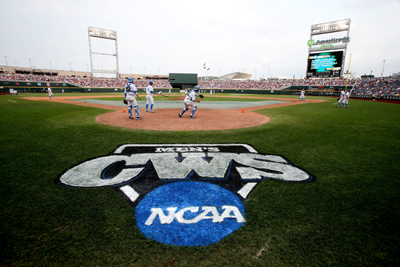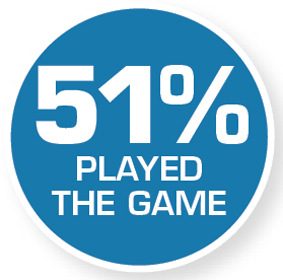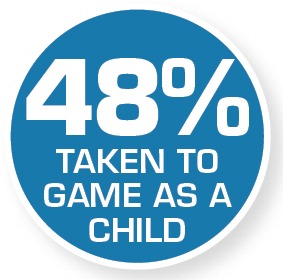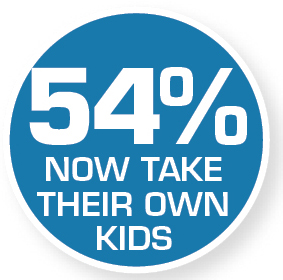Rob Manfred, now 56 years old, is thinking a lot lately about the 10-year-old version of himself as he sets his agenda as MLB’s new commissioner.
In the spring of 1969, Manfred played shortstop in the Rome, N.Y., Little League. He would play organized baseball for only another year before shifting his competitive energies as an older student to tennis. But it began a love affair with baseball nearly 50 years strong that has ultimately made him the first graduate of the Little League program to become commissioner.
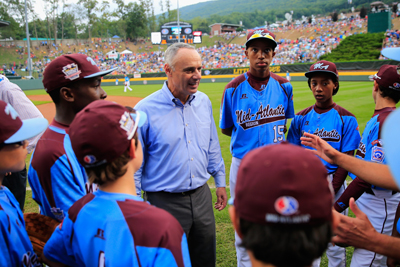 |
Prior to taking over as commissioner, Rob Manfred visited last year’s Little League World Series. Youth participation is a core component of the One Baseball initiative.
Photo by: GETTY IMAGES
|
The centerpiece of Manfred’s initial period leading the sport, One Baseball, is designed to create many other youngsters in his image.
“There are really twin goals. We are very interested in youth participation as the beginning of a broad pipeline that ultimately funnels down to high-quality major league players,” Manfred said. “I am also very interested in the Rob Manfreds of the world. Played Little League. Liked it enough to become a lifelong fan. No shot whatsoever of playing in the major leagues. Not even
{podcast}
SBJ Podcast Archive:
From Aug. 18, 2014: Baseball writer Eric Fisher and Executive Editor Abraham Madkour discuss the challenges Rob Manfred faces as the new MLB commissioner.
good enough to play in high school. But I want those kids, too. They are very important to our business.”
One Baseball is Manfred’s rallying cry, under which he is trying to unite MLB with baseball organizations such as Minor League Baseball, Little League, USA Baseball and the NCAA. The common purpose: helping the sport grow and boosting youth participation, and in turn creating legions of new fans.
Many of these groups for years have had relationships with MLB, but no one before Manfred has attempted to unite multiple layers of professional and amateur baseball in as comprehensive a way as what the One Baseball effort contemplates.
Beyond simply elevating youth baseball participation, which according to several organizations has been in a steady
decline for the past two decades, the One Baseball mission intends to advance player safety, streamline an often conflicting calendar for the sport overall, and create smoother transitions and more consistent messaging among the levels of play.
One public initiative from the collaboration, Pitch Smart, was introduced in November. The program outlines medically reviewed guidelines that young pitchers can follow to help avoid overuse injuries and potentially reverse the alarming increase in Tommy John surgeries over the past five years.
Another effort that will be formally announced soon, Play Ball, will promote short-form versions of baseball that can be played with less than two full teams. MLB last week also named former Los Angeles Angels of Anaheim general manager Tony Reagins as its senior vice president of youth programs, a new position in which he will oversee and coordinate the league’s youth-oriented and domestic development initiatives, such as its Urban Youth Academies and the Reviving Baseball in Inner Cities program. Reagins will report to new league Chief Operating Officer Tony Petitti.
“We’ve enjoyed a successful relationship with MLB for many years, decades really,” said Stephen Keener, Little League president and chief executive. “But what Rob has done is really turn up the intensity around this issue, and made it a central piece of his administration. To be a healthy sport and a healthy operation at the major league level, kids need to be engaged. Baseball looks at Little League as one of the best farm systems for fan development.”
Data realities
MLB began the One Baseball effort with an extended research project, spending several months last year gathering data on youth participation in sports and fan avidity, and where trendlines were headed. The work, studying sports all over the world, was done in-house and largely under the guidance of Chris Marinak, senior vice president of league economics and strategy, and Kim Ng, senior vice president for baseball operations, and under a Manfred directive of no outside consultants.
The study found several trends. As Manfred himself experienced and suspected to still be the case, two primary factors emerged in successfully creating and retaining younger fans: whether and when they played organized baseball as a kid, and how old they were when they attended their first major league game. The younger those ages were, the stronger a fan they generally became, even later as an adult.
“We looked hard at avidity, and these were the two biggest determinants,” Manfred said. “So when you look at those things, they all point to the direction of youth. … The research also showed some scary things. The fastest-growing activity among kids now is actually nothing.”
The research also revealed what has been anecdotally discussed within the game for years: A significant issue exists in the 13-16 age group. At that point, players have aged out of Little League, field dimensions grow larger, and students are presented with an array of competitive choices among school teams, travel teams and organizations such as Babe Ruth League baseball, options that often present conflicting schedules and demand large financial commitments. Amid that fragmentation, it also is the point where participation drops off markedly.
“Historically, we tend to lose a lot of kids around this time,” said Paul Seiler, executive director and CEO for USA Baseball, the national governing body for amateur baseball. “It’s been a real issue. But we along with MLB have a mutual interest in boosting participation and trying to find ways to address this. We’re looking hard at all these issues.”
As Manfred began to seek out closer relationships with other groups in organized baseball, it followed his own comprehensive reorganization of MLB’s headquarters and league structure. Since his election last August, Manfred has taken several steps to unify baseball’s operations in online and offline media, brought together other business units including marketing, sales and legal, and named seven direct reports to him that in turn cover the scope of league functions.
To Manfred, it was not possible to be optimally integrated with the rest of organized baseball if MLB’s own operation was not similarly integrated.
“One Baseball has actually become an internal tagline for at least four levels of initiatives,” Manfred said. “The first is the macro-level business reorganization of our office, and my direct reports. The second is the functional integration here. The third is partnerships with these various groups. And the fourth is around diversity.”
Creating change
One Baseball will be a multiyear effort, and Manfred’s own contract takes him through the 2019 season. But several goals are in place for this year, among them the Play Ball initiative, an increased youth focus from MLB’s Ticketing Review committee, and a rollout of a recently announced partnership with the Positive Coaching Alliance.
That effort calls for additional coaching through a so-called double goal philosophy of making life lessons a key
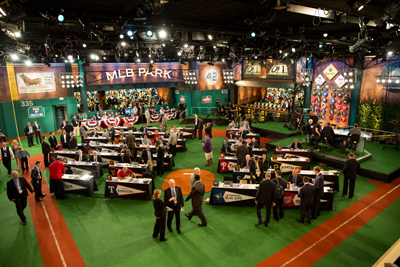 |
A player development issue being discussed by MLB and the NCAA is eliminating the long-existing scheduling conflict between the College World Series and the MLB draft.
Photos by: GETTY IMAGES (2)
|
component of the instruction along with baseball skills, and increased workshops to create more PCA-trained coaches. MLB has also sought to align with other coaching organizations in an acknowledgment of the key role coaches play in the youth baseball ecosystem. To that end, Manfred first publicly disclosed the initial concepts of One Baseball in January at the annual convention of the American Baseball Coaches Association.
“Our coaches are very excited to hear about what’s being contemplated,” said Craig Keilitz, ABCA executive director. “The big thing is that it is not just MLB and then everybody else. There’s a real appreciation from the majors on down that we’re all in this together. There are a lot of things that still need to happen. And both owners and players have to buy in fully. But there’s a ton of opportunity moving forward.”
Manfred also intends to continue in-depth conversations with the NCAA, including talks toward potentially harmonizing a long-existing schedule conflict between the annual MLB draft and the College World Series. The draft typically occurs in the first week of June, and the College World Series follows later in the month. Many players participating in college baseball’s premier event have already been drafted, and MLB teams are eager to get them signed and into minor league teams as soon as possible.
“The draft and College World Series is actually only one component of a whole range of things of mutual interest,” said Damani Leech, NCAA managing director of championships and alliances. Leech’s responsibilities include oversight of the College World Series. “It’s also about wood bats and equipment, playing rules and safety, amateurism, scouting, scholarships, the overall calendar. A whole range of issues. But it’s really helpful to hear a desire from MLB to establish a continuum of player development. So we’re both trying to figure out things we can bring to the table.
Beyond the question of whether a player should play college or pro, there is a recognition that “the big question out there is actually baseball or not baseball,” Leech said.
For MLB, that also means collective bargaining with the MLB Players Association. Elements such as the draft, its timing and resulting effects on how and when players enter professional baseball are all subject to bargaining with the union, and Manfred described what will ultimately be a three-way negotiation on this topic when formal talks begin in 2016 toward a new labor deal.
“The timing around a lot of this is very good because some of those issues integrate directly with CBA issues,” Manfred said. “But we’re also looking to see where we can go in and close on some things this year.”
They’re not alone
Rich Luker, the founder of Luker on Trends and the ESPN Sports Poll, said the task of attracting more young people is a challenge for the industry, not just a particular sport. Simply put, people younger than 24 today aren’t as interested in sports as their counterparts 20 years ago, he said.
“I have seen stories cherry-picking sports saying they are losing youth or getting too old,” Luker said. “More often than not, when you adjust for overall declines, no one sport has a bigger problem than another with youth declines — or aging.”
More important, Luker said, is that over the past several years, interest in sports among people older than 35 is increasing. “So the sports fan base is not ‘getting old,’ it is, in a very real sense ‘revitalizing,’” he said.
Luker bases his findings on ESPN Sports Poll trends over the past 20 years. He also conducted custom research for MLB in 2014 that found baseball to be stronger than people may assume. Among the findings:
■ 51 percent of all Americans ages 12 or older played organized baseball or softball at some time in their lives. That’s No. 1 for all sports.
■ 48 percent of all Americans ages 12 and above said they were taken to a baseball game
(from amateur to pro) by their parents when they were children. On a scale of 0-10, where 0 was their worst childhood memory and 10 their best, more than 70 percent said those outings were a 7-10 and 28 percent said they were a 10.
■ While some people may say baseball is not America’s pastime or that
millennials don’t care, 54 percent of parents of children younger than 18 today (and half of those parents are millennials) have taken their kids to games.
Luker said that while baseball is healthy, there are reasons to be concerned about the future, but not because of problems with the game. Instead, he said, it’s because of the competition for the time and attention from the range of entertainment options facing younger people today.
“I think what you are seeing with Commissioner [Rob] Manfred is great forward thinking, not a defensive response to a sport in trouble,” Luker said.
— David Broughton



